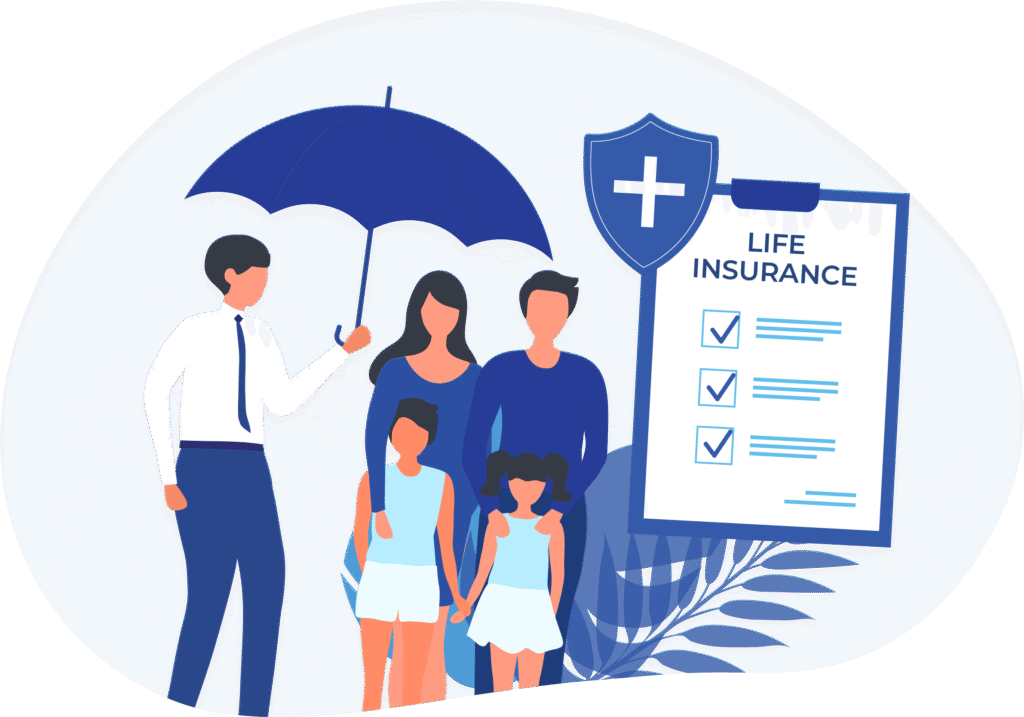Choosing the right insurance policy is one of the most important financial decisions you can make. The right coverage protects your health, income, property, and loved ones against life’s uncertainties. But with so many policies and providers out there, selecting the ideal insurance plan can feel overwhelming.
This comprehensive guide walks you through how to choose insurance tailored to your life situation—whether you’re starting your first job, raising a family, running a business, or preparing for retirement.
Why Insurance Matters
Protects Your Financial Security

Insurance serves as a safety net. It ensures you don’t face overwhelming financial loss from events like accidents, illnesses, theft, or death. Without proper insurance, a single unexpected event can drain savings and leave you in debt.
Helps Plan for the Future
Policies like life, health, and disability insurance are tools that help you plan for the long term. They provide peace of mind and stability, especially when you’re responsible for dependents.
Understand Your Needs Before You Choose
Life Stage Assessment
Your insurance needs vary depending on your life stage:
- Young Adult: Health insurance, renter’s insurance, maybe auto
- Married/With Kids: Life insurance, health, home, and auto
- Homeowner: Homeowners insurance, liability coverage
- Business Owner: Commercial and professional liability insurance
- Retiree: Medicare, long-term care, estate planning coverage
Risk Profile
Evaluate what risks you’re exposed to:
- Do you have dependents?
- Do you travel often?
- Are you self-employed?
- Is your income variable?
- Do you have debt or large assets?
Budget and Financial Goals
- Understand how much you can afford in premiums.
- Decide on the balance between coverage and cost.
- Consider insurance as part of your overall financial plan.
Step-by-Step: Choosing the Right Insurance Policy
Step 1: Decide What Type of Insurance You Need
The first step is identifying which type of policy aligns with your situation. Some key categories include:
Health Insurance
Essential for covering medical costs and reducing out-of-pocket expenses. Look at plans that include:
- Preventive care
- Hospitalization
- Emergency services
- Mental health coverage
Life Insurance

Protects your family if something happens to you. Choose between:
- Term Life Insurance (affordable, temporary)
- Whole Life or Universal Life Insurance (more expensive, lifelong with cash value)
Auto Insurance
Required in most places. Consider coverage like:
- Liability (for damage/injury you cause)
- Collision (your vehicle damage)
- Comprehensive (non-accident events like theft, weather)
Homeowners or Renters Insurance
Covers property damage and personal belongings. May also offer liability coverage if someone is injured on your property.
Disability Insurance
Replaces income if you can’t work due to illness or injury. Often overlooked but critical for income earners.
Long-Term Care Insurance
Useful for retirees or those planning for aging. Covers costs like nursing homes, assisted living, or in-home care.
Travel Insurance
Important if you travel frequently or internationally. Covers cancellations, medical emergencies, or lost luggage.
Business Insurance
If you own a business, you may need:
- General liability
- Professional liability
- Workers’ compensation
- Business interruption coverage
Step 2: Compare Coverage Options
Not all policies are created equal. When comparing, look at:
Coverage Limits
Know the maximum amount the policy will pay out. Ensure it’s enough to cover your actual risk or need.
Premium Costs
Monthly or annual payments vary greatly. Balance affordability with sufficient coverage.
Deductibles
This is what you pay out of pocket before the insurer covers expenses. Lower premiums usually come with higher deductibles.
Exclusions and Conditions
Carefully read the fine print. Exclusions can limit your protection. For example, some life insurance policies won’t cover deaths due to certain risky activities in the first two years.
Claim Process
A reliable insurer should offer a fast and clear claim process. Research online reviews and ratings to check customer service quality.
Step 3: Evaluate the Insurance Provider
Your choice of company is just as important as the policy itself.
Financial Strength
Look at ratings from agencies like AM Best, Moody’s, or Standard & Poor’s. Strong financial ratings mean the company is more likely to pay claims.
Reputation and Reviews
Check customer feedback. Poor claims service or hidden fees are red flags.
Policy Customization
Choose a company that allows riders or add-ons, letting you tailor the policy to your unique needs.
Discounts and Bundles
Many insurers offer multi-policy discounts (e.g., bundling home and auto). Explore cost-saving options.
Step 4: Seek Professional Guidance
Consulting an insurance agent or financial advisor can help clarify confusing terms, identify gaps, and recommend the best products based on your financial goals.
Tips for Making the Right Decision

Don’t Over-Insure
It’s easy to buy too much insurance, especially with life and health plans. Ensure you’re covering what you need—not everything imaginable.
Update Your Coverage Regularly
Life changes—marriage, kids, home purchase, business ventures—require adjustments to your insurance. Review policies annually.
Choose Portability
Look for plans you can take with you when changing jobs or moving states. This is especially important with health and life insurance.
Read the Fine Print
Understand what’s included, what’s not, how to file claims, and the renewal terms. Never rely solely on what an agent tells you—ask for the full policy document.
Emergency Fund Matters Too
Insurance isn’t a replacement for an emergency fund. You’ll still need savings to cover deductibles and uncovered costs.
Common Mistakes to Avoid
Waiting Too Long
Buying insurance early usually means lower premiums. Waiting can lead to higher rates or denial due to pre-existing conditions or age.
Not Comparing Enough
Settling on the first policy you’re offered can cost you. Get at least 3 quotes for comparison.
Ignoring Employer Benefits
If your job offers group insurance (especially life or disability), it can be a low-cost or free option.
Assuming One Size Fits All
Your friend’s policy might not suit your lifestyle. Tailor your plan to your own financial needs and risk exposure.
Also Read : Understanding The Different Types Of Insurance You Need
Conclusion
Insurance isn’t just a safety net—it’s an essential part of a responsible financial life. By understanding your needs, evaluating different types of policies, and comparing providers, you can secure the right coverage to protect your health, loved ones, income, and property. Remember, insurance is not one-size-fits-all. The best policy is one that aligns with your current lifestyle and anticipates the life changes ahead.
Whether you’re buying insurance for the first time or reviewing your current plans, take your time, ask questions, and consult professionals when needed. Making the right insurance choices today could be the difference between stability and financial chaos tomorrow.
FAQs
1. How much life insurance coverage do I need?
A general rule is 10–15 times your annual income. However, consider your debts, dependents, and long-term financial goals.
2. Should I get insurance through my employer or buy my own?
Employer plans are often cheaper, but they may not be portable or sufficient. It’s wise to have supplemental coverage if needed.
3. Is it better to have low premiums or low deductibles?
It depends on your cash flow. If you can afford a higher deductible in an emergency, low premiums save money long-term.
4. Do I need renters insurance if I don’t own the property?
Yes. Renters insurance covers your personal belongings and provides liability protection.
5. How often should I review my insurance policies?
At least once a year or after major life changes like marriage, childbirth, or home purchase.









